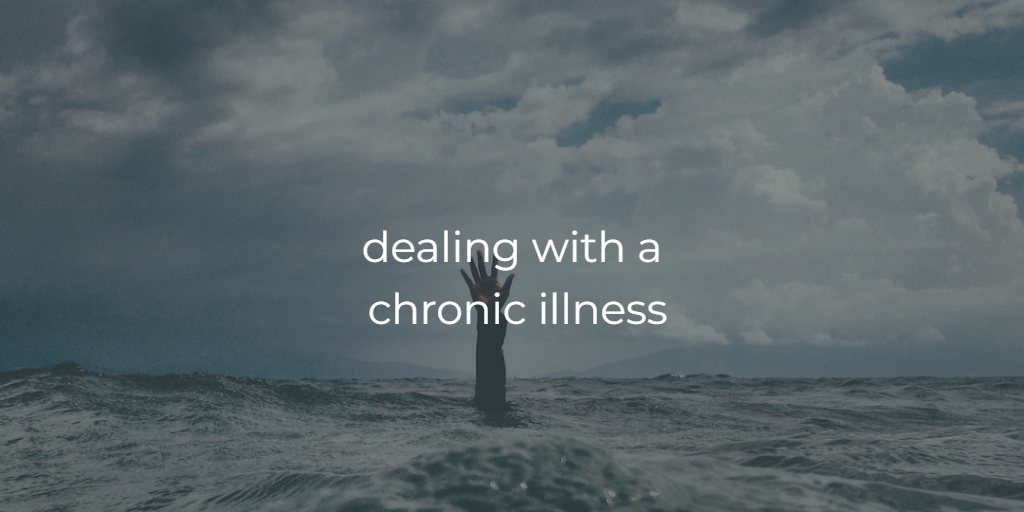Our Blog
Heart of a Giant Foundation
Disclaimer: The information shared on this blog is not intended to replace professional medical advice. Always consult with a healthcare provider for any medical issues.

A Plan For Dealing With Chronic Illness
‘How do you deal with all of it?’ is the question that I am often asked, especially since the blog’s launch. Many of my friends have asked me about this, including a cousin concerned about the battle of facing a chronic illness.
I am not a medical professional. However, I am still able to share my views from an insider’s perspective. The purpose of my blog (and the media we share) is less about me sharing my story than about educating those who follow it. For this reason, I decided I would go back to when I was first diagnosed with DCM in 2012 and explain how I approached the situation at the time.
I don’t think there is a set way to deal with a situation like this. Perhaps we would have some similarities, but every patient’s experience is unique in itself. Thus, approaches and ways to deal with an experience vary.
In the beginning, I felt very lost. It is a tough circumstance to grasp. I knew then (and this still applies now) that I have to keep moving forward and always remember why I need to do this. I also know that I have got to do the best I can for as long as possible. With that mindset, I have always had to figure out how best to approach living with my condition and how best to build a process to deal with it.
1. ‘Here is the thing,’ I’d think to myself – ‘You’ve got a chronic illness, a non-communicable disease (NCD). It is not going away. It is here with you for the rest of your life…
NCDs are diseases of long duration, and generally, they have a slow progression. They are by far the leading cause of death in the world. They force many people into or entrench them in poverty due to catastrophic expenditures for their treatment. They also have a large impact on undercutting productivity. Unfortunately, not all countries, or rather not all medical systems, are prepared to provide adequate diagnosis and long-term care.
Nonetheless, even with access to the best care and technology (and of course, depending on the state of your condition and your circumstances at the time), the patient (and his family) would have to play a significant role in this process.
It starts with taking charge of leading and managing the situation. This would be a life-long process including daily management of stress, pain, energy levels, focus, etc. The efforts could further extend the duration of life and the progression of the condition. Lastly, it could also help to avoid or delay crises or attacks (and in some instances, to lessen their impact).
2. Don’t fight your condition; embrace it! Soon after my diagnosis, I realized that the illness is part of me and that I needed to be aware of it and accept it. So, rather than resisting an illness that is not going away, it would be better to just embrace it.
By the sixth week after the diagnosis, I was much calmer, more serene, and was starting to embrace my illness. I was ‘trapped by my life, my life with the illness. So, at that point, my ‘choice was to continue to swim or to be drowned’. Either way, I was ‘already wet.’
At first, I endured some confusion and some soul-searching. I went from facing imminent death, questioning God, to trying to understand why it was me who had to live with this condition. ‘This is not fair, I’d hear myself saying. Then, my righteous side would chirp in – ‘why not you?’ ‘How fortunate you are!’ Finally, questions like if I were up to the challenge, how badly I wanted to stay alive, and why I did all came into play. Getting to the answers early on was essential.
Thereafter, every day I’d make a choice to live fully and to go on. Every day, I’d wake up and choose to be a husband, a dad, a son, a brother, a friend, an engineer, or simply to contribute to others and to society as much as I could. The day I cannot go on anymore, or the day I decide to stop, that’ll be it.
3. During the same confusion phase (above), I dwelled on researching cardiomyopathy and heart conditions. I regularly underwent exchanges with Dr. Len (my cardiologist in South Africa). I went for some psychotherapy sessions (with Judy). I also received great support at work from my family and my partner (who would become my Lovely Wife).
However, as much as others could do for me, I still had to do my part as well. Luckily, in my case, I could do a lot. With chronic conditions in particular, what health care professionals do for the patient is absolutely crucial. At the same time, patients’ roles (in many cases) can be pivotal concerning the effectiveness of all of these efforts. For one, despite the best of care, systems, and technology, one can still easily ‘screw things up (to put it bluntly). Many would call for discipline, bravery, or simply for being a good patient. People with chronic illnesses have to dig deeper within themselves for excuses to do the right things daily, both for ourselves and our dear ones.
Thankfully, in my case, I was still relatively healthy. In 2012, I was classified as a Grade II heart patient, according to the New York Heart Association – NYHA classification system.
Then, I put together a plan to deal with my condition. Although the plan has evolved a lot over the years, I strongly believe that it plays an important role in my continued quest for joy and happiness whilst dealing with my illness. Working through set goals and an action plan made me feel somewhat in control and gave me more and more confidence over time. It also helped me remain calm and composed whilst facing the daily storms (of symptoms, mood swings, low energy, etc.).
Finally – 4. ‘Live life, keep busy, keep pursuing happiness’ was my mantra. It was important for me to not let the illness take away my joy and happiness. Interestingly, the process made me understand that happiness and illness are not actually exclusive. For, if anything, illness would actually exemplify my sense of fulfillment.
That is for now.
The Heart of a Giant Foundation, Inc. is a 501(c)(3) nonprofit organization, EIN 84-2900386. Donations are tax-deductible.

